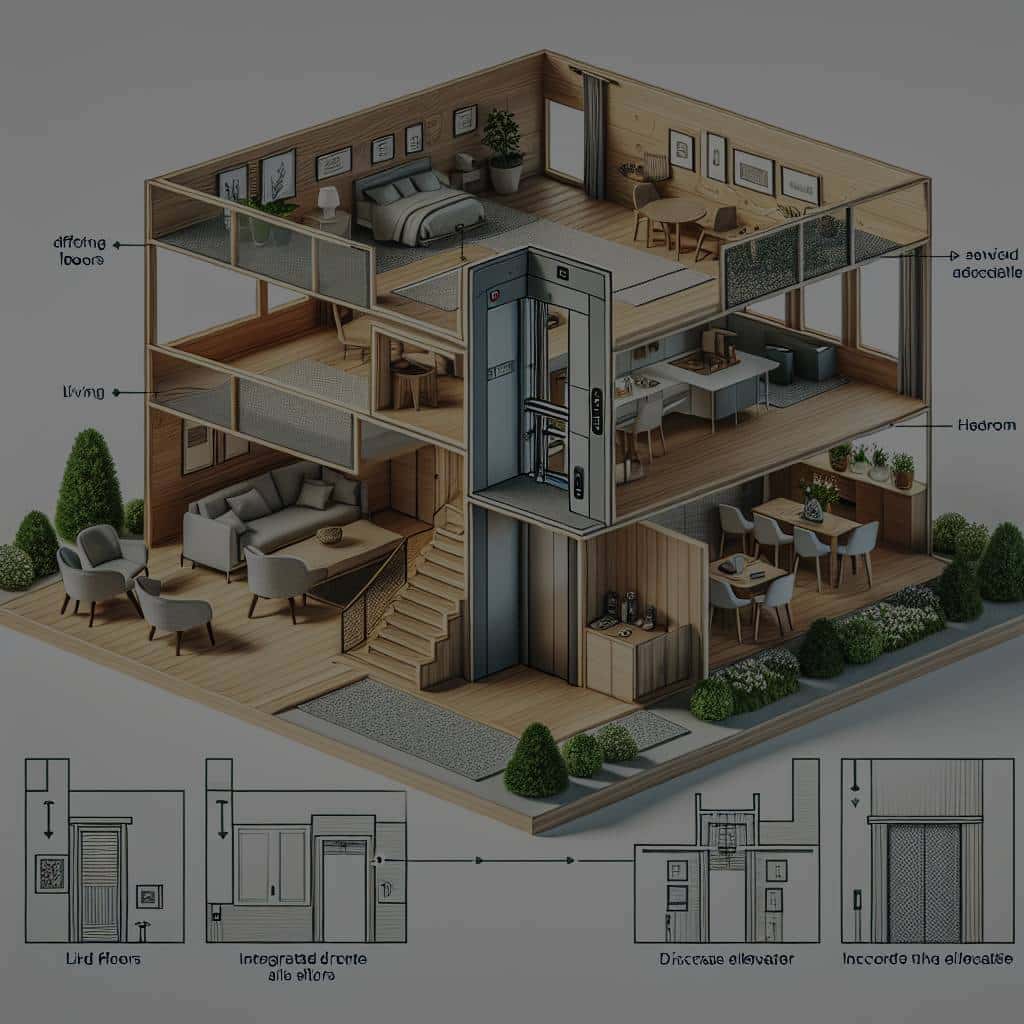As the population ages and the importance of accessibility within the home grows, one solution stands out: installing a home elevator. A home lift is not only practical for those with mobility issues but can also be a unique design feature that adds value to your home. But how can you incorporate a home elevator discreetly and efficiently into a multi-story house? This article will explore various aspects such as design, accessibility, building requirements and the best elevator systems to consider.
Understanding Your Home and Elevator Requirements
Before proceeding with the installation of an elevator, it’s essential to understand the requirements of your home and what type of lift will best suit your needs.
Also read : How to Design a Home Office That Minimizes Distractions in a High-Traffic Household?
The first step in incorporating a lift into your home is to assess your space. Consider the physical layout of your home, including the size and shape of the rooms, the location of stairways and entry points, and the clearances required for door swing and elevator travel. This will also help you determine the size and type of elevator system you can accommodate.
The second requirement is the accessibility needs of the users. Some elevators are specifically designed for wheelchair users, with wider doors and enough space to accommodate a wheelchair’s turning radius. Think about who will be using the elevator, and what their mobility needs are.
Additional reading : What’s the Best Way to Create a Sensory Garden for Therapeutic Benefits in Your Backyard?
Next, consider your design preferences. Do you want the elevator to blend in with your home’s decor, or do you want it to stand out as a unique feature? There are a number of modern, sleek designs available that can seamlessly blend into your home’s aesthetic.
Lastly, consider your home’s construction. Some homes may not be suitable for elevator installation due to structural limitations or building codes. Seek professional advice to ensure that your home can safely accommodate an elevator.
Choosing the Right Home Elevator Design
The design of your home elevator should complement your home’s style while still being functional and accessible. Here’s how you can make the right design choices.
Firstly, select a design that will blend with your home’s interior. Elevators come in a variety of finishes, from glass to wood, and you can choose something that fits your home’s aesthetic.
Secondly, consider the shape and size of the elevator. Some lifts are more compact, making them a good fit for homes with limited space. Others are larger and can accommodate wheelchairs or multiple passengers.
Thirdly, think about the door design. Elevators can have swing doors, sliding doors, or accordion-style doors. Your choice will depend on the space you have available and the level of accessibility you require.
Elevator Installation: Building and Construction Aspects
The installation of a home elevator should be planned carefully to ensure safety and efficiency.
Firstly, consult with a professional elevator installer or a construction engineer. They will assess your home’s structure and determine the best location for the elevator.
The construction process involves creating the necessary space for the elevator shaft, installing the lift system, and finishing the area to match your home’s interior. It’s important to note that the installation process may involve significant alterations to your home’s structure.
When planning for the installation, be sure to consider local building codes and regulations. These rules can affect the type of elevator you can install, its size, and its placement within your home.
Accessibility Features: Making Your Elevator Wheelchair Accessible
If the primary user of the elevator will be a wheelchair user, you need to consider certain design and accessibility features to make the elevator wheelchair-friendly. These include the size of the elevator, the door design, and the controls.
The elevator should have enough space to accommodate a wheelchair’s turning radius. The door should be wide enough for a wheelchair to pass through comfortably, and the controls should be located at a height that is easily accessible from a wheelchair.
Selecting the Right Elevator System: Platform Lifts vs. Traditional Elevators
Finally, you need to choose the right type of elevator system for your home. The two most common types are platform lifts and traditional elevators.
Platform lifts are a cost-effective solution, especially for homes with limited space. They typically don’t require a separate machine room, which can save on construction costs. However, they may not have the same level of comfort and speed as traditional elevators.
Traditional elevators, on the other hand, offer a more comfortable ride and can carry more weight. They are often more aesthetically pleasing, with more design options available. However, they may require more space and construction work.
Overall, the choice between a platform lift and a traditional elevator will depend on your budget, space constraints, and personal preferences.
Considering Additional Features and Customizations for Your Home Elevator
As you contemplate the installation of your home elevator, there are also some additional features and customizations you may want to consider to ensure optimal functionality.
Lighting is a key feature that can enhance both the aesthetics and safety of the elevator. Adequate lighting can ensure clear visibility for users, especially those with vision impairments. You can opt for LED lights, which are energy-efficient and long-lasting, or you can choose mood lighting for a touch of elegance.
Speed is another factor to think about, depending on the number of floors in your home. While standard elevators have speeds of about 40 feet per minute, there are faster options available that can make travel between floors more efficient.
The control panel of the elevator is another important aspect to consider. It should be easy to use, with buttons that are large and clearly labeled. Additionally, you may want to consider implementing voice-activated controls for users with mobility limitations.
Emergency features, such as alarms, telephones, or intercom systems, are also vital for safety. These features can provide an extra layer of security in case of power outages or mechanical failures.
Lastly, consider if any customizations would make the elevator more convenient for your use. For example, foldable seats can be useful for those who may have difficulty standing for the duration of the ride.
Conclusion: Implementing a Discreet and Efficient Home Elevator
All in all, incorporating a home elevator into a multi-story home is a multifaceted process that requires careful planning and consideration. It’s about understanding your home’s structural requirements, selecting a design that complements your interior, and choosing the right elevator system that meets your needs and preferences.
Moreover, it’s crucial to keep in mind the accessibility needs of the users. From size and door design to features like lighting, speed, and control panel design, every detail plays a crucial role in ensuring an elevator that is not only efficient and discreet but also user-friendly and safe.
Lastly, remember that professional guidance is paramount. Whether it’s a construction engineer or an elevator installer, these experts can provide valuable insights, ensuring your home elevator is installed safely and efficiently.
By taking these factors into account, you can successfully incorporate a discreet home elevator into your multi-story home, enhancing the property’s value, and most importantly, ensuring a comfortable and accessible living environment for all residents.






